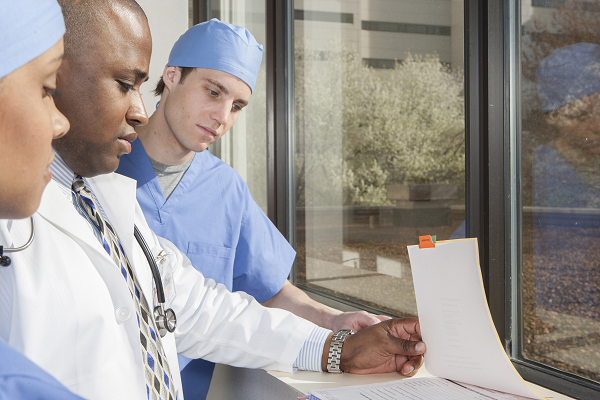Northeast Medical Institute - New Haven Campus Phlebotomy Course & Cna Class Things To Know Before You Buy
Northeast Medical Institute - New Haven Campus Phlebotomy Course & Cna Class Things To Know Before You Buy
Blog Article
Northeast Medical Institute - New Haven Campus Phlebotomy Course & Cna Class Fundamentals Explained
Table of ContentsNortheast Medical Institute - New Haven Campus Phlebotomy Course & Cna Class Fundamentals ExplainedNortheast Medical Institute - New Haven Campus Phlebotomy Course & Cna Class for BeginnersThe smart Trick of Northeast Medical Institute - New Haven Campus Phlebotomy Course & Cna Class That Nobody is DiscussingNortheast Medical Institute - New Haven Campus Phlebotomy Course & Cna Class Fundamentals ExplainedThe Northeast Medical Institute - New Haven Campus Phlebotomy Course & Cna Class StatementsThe Best Strategy To Use For Northeast Medical Institute - New Haven Campus Phlebotomy Course & Cna Class
The use of such tools must be accompanied by other infection prevention and control practices, and training in their usage. Not all security devices are suitable to phlebotomy. Before picking a safety-engineered tool, customers must extensively check out offered gadgets to identify their appropriate use, compatibility with existing phlebotomy practices, and efficacy in protecting personnel and patients (12, 33).For settings with low resources, price is a driving element in purchase of safety-engineered gadgets - CNA Courses. Where safety-engineered devices are not offered, knowledgeable use a needle and syringe is acceptable. Unintentional exposure and certain information regarding an occurrence should be taped in a register. Support solutions should be advertised for those that undergo unexpected direct exposure.
One of the vital markers of high quality of care in phlebotomy is the involvement and cooperation of the client; this is equally beneficial to both the health worker and the client. Clear info either composed or verbal ought to be offered to every individual that undertakes phlebotomy. Annex F gives example message for clarifying the blood-sampling treatment to a patient. In the blood-sampling area for an outpatient division or center, supply a comfortable reclining sofa with an arm remainder.
What Does Northeast Medical Institute - New Haven Campus Phlebotomy Course & Cna Class Mean?
Make sure that the indicators for blood tasting are clearly specified, either in a written procedure or in documented instructions (e.g. in a research laboratory type). In any way times, adhere to the techniques for infection avoidance and control provided in Table 2.2. Infection prevention and control techniques. Collect all the devices needed for the procedure and location it within risk-free and easy reach on a tray or trolley, making sure that all the products are plainly visible.
Present on your own to the client, and ask the client to state their complete name. Check that the lab type matches the person's identification (i.e. match the individual's information with the laboratory form, to ensure accurate recognition).
Make the individual comfy in a supine setting (if feasible). Location a tidy paper or towel under the individual's arm. Review the examination to be done (see Annex F) and get spoken consent. The patient has a right to refuse a test at any moment before the blood sampling, so it is necessary to guarantee that the person has actually understood the procedure.
Some Known Facts About Northeast Medical Institute - New Haven Campus Phlebotomy Course & Cna Class.
Extend the person's arm and evaluate the antecubital fossa or lower arm. Find a blood vessel of an excellent size that shows up, straight and clear. The representation in Area 2.3, reveals usual placements of the vessels, yet several variants are feasible. The average cubital capillary exists between muscular tissues and is check this site out generally one of the most very easy to puncture.
DO NOT put the needle where capillaries are diverting, due to the fact that this enhances the chance of a haematoma. Finding the capillary will certainly help in establishing the appropriate dimension of needle.
Samplings from central lines lug a threat of contamination or incorrect laboratory examination outcomes. It is acceptable, however not excellent, to draw blood samplings when very first presenting an in-dwelling venous device, prior to connecting the cannula to the intravenous fluids.
Everything about Northeast Medical Institute - New Haven Campus Phlebotomy Course & Cna Class
Failure to enable adequate call time raises the threat of contamination. DO NOT touch the cleansed site; in particular, DO NOT place a finger over the vein to guide the shaft of the exposed needle.
Ask the patient to create a hand so the capillaries are extra prominent. Get in the blood vessel promptly at a 30 degree angle or less, and remain to present the needle along the vein at the simplest angle of entrance - PCT Courses. Once enough blood has been collected, launch the tourniquet BEFORE taking out the needle
9 Easy Facts About Northeast Medical Institute - New Haven Campus Phlebotomy Course & Cna Class Described
Take out the needle gently and use gentle stress to the website with a tidy gauze or dry cotton-wool ball. Ask the individual to hold the gauze or cotton woollen in position, with the arm expanded and increased. Ask the person NOT to bend the arm, because doing so triggers a haematoma.

The Best Strategy To Use For Northeast Medical Institute - New Haven Campus Phlebotomy Course & Cna Class
Where possible, keep the tubes in a shelf and move the rack in the direction of you - https://trapezoidal-guppy-d55.notion.site/CNA-Courses-and-Phlebotomy-Training-at-Northeast-Medical-Institute-New-Haven-Campus-1e60102a70ac44bc972a68d826278822. If the sample tube does not have a rubber stopper, inject incredibly slowly right into the tube as lessening the stress and speed used to move the specimen minimizes the threat of haemolysis.

Report this page